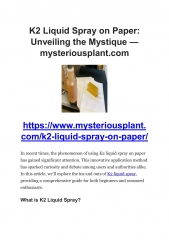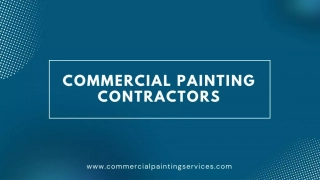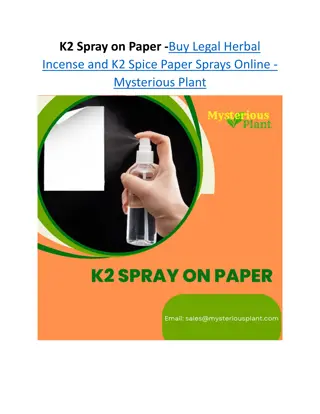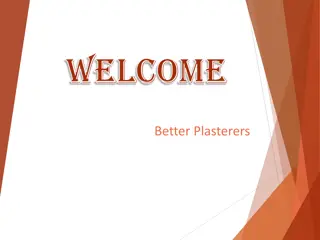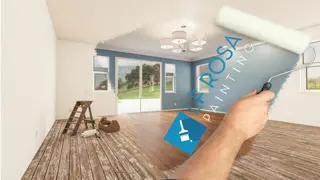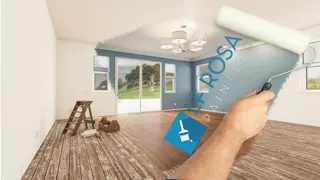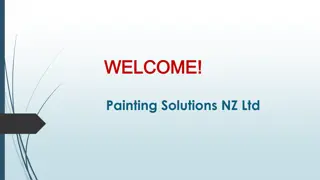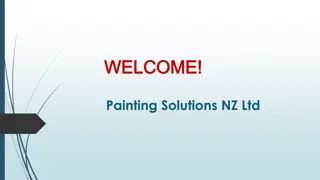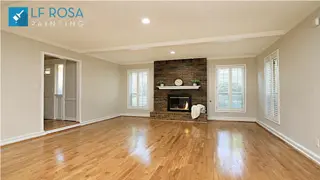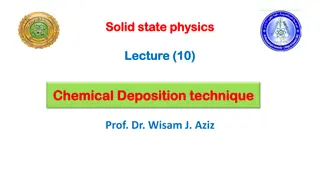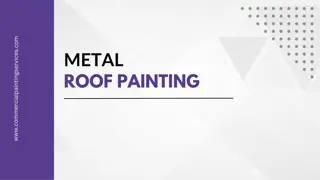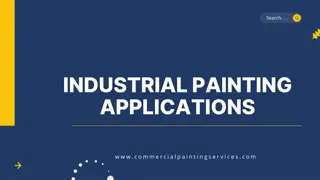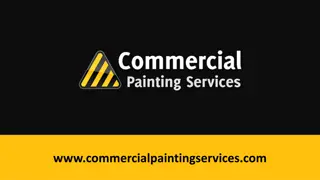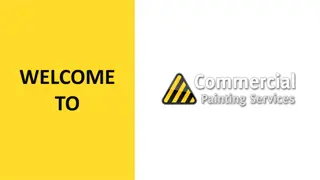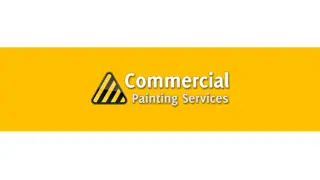
Effective Spray Technique Training for Reducing Waste in Painting and Coating Operations
Learn how to optimize spray equipment, maintain proper distances, angles, and motion for efficient coating application, and reduce overspray to minimize waste in painting and coating operations. Training tips include techniques to enhance productivity and environmental sustainability.
Download Presentation

Please find below an Image/Link to download the presentation.
The content on the website is provided AS IS for your information and personal use only. It may not be sold, licensed, or shared on other websites without obtaining consent from the author. If you encounter any issues during the download, it is possible that the publisher has removed the file from their server.
You are allowed to download the files provided on this website for personal or commercial use, subject to the condition that they are used lawfully. All files are the property of their respective owners.
The content on the website is provided AS IS for your information and personal use only. It may not be sold, licensed, or shared on other websites without obtaining consent from the author.
E N D
Presentation Transcript
1 Reduce Waste with Spray Technique Training in painting & coating operations Georgia, April 2016 Mr. Christian Angerbauer, Mr. Roland Oberwimmer www.biomasseverband.at
2 Introduction Spray equipment needs to be compatible with coating characteristics, finish quality requirements, production demands, and product characteristics; and Optimal efficiency (in any type of coating application) is most effectively and readily achieved by the proper selection, set up, and operation of spray equipment. This, of course, is complemented by the ability to recognize and diagnose application problems.
3 Training for employees Spray gun distance to part Spray gun distance to part should follow recommendations from paint sheet & gun set up from manufacturer. Keep gun distance at optimal distance Be consistent varied distances leads to an inconsistent film build Paint performs best at optimal spray distance
4 Training for employees Perpendicular to surface Keep the spray pattern perpendicular to the surface No arcing or wrist rotation Use a fluid motion when you spray to reduce material consumption
5 Training for employees Overlap Consistent 50% Overlap
6 Training for employees Banding & Edging To reduce overspray on a work piece, which essentially means you spray the outside corners before spraying the flat center areas. For example, use a vertical stroke at each end of a large panel, rather than trying to cover the ends with horizontal strokes. This reduces paint usage and overspray. Technique used to reduce overspray on a flat panels can be used on edges of parts.
7 Training for employees Reduce Lead and Lag Excessive lead and lag wastes paint Adds to toxicity of paint-related waste such as paper and masking
8 Training for employees Pattern Size & Shape Always keep as much of the spray pattern on the part as possible. Shape the pattern to the part
9 Training for employees Pattern Size & Shape Slender pieces should be coated with a narrow horizontal or vertical pattern For a vertical pattern, the gun speed should be increased to account for the added time the part is in the pattern. Gun motion should always be lengthwise to the part.
10 Training for employees Transfer Efficiency The amount of paint that is applied to the part. Even good painters can have a transfer efficiency (TE) of 50% or less. 10% increase in TE can have dramatic effects on costs and air emissions
11 Training for employees Build Efficiency The amount of part surface that has the optimal thickness of the coating after spraying. Very high TE can still produce low quality of work if the target thickness is not achieved. Consistency is the key to build efficiency.
12 Spray painting technologies Conventional: High overspray levels (65%-70%) BUT high finish quality, fast working speed High volume low pressure (HVLP): High finish quality, great material savings BUT slower working speed and problems with thicker paints Air-assist airless: Super fast application speed - one of the fastest available, High finish quality, low overspray BUT much higher investment costs Reduced pressure (RP)/Compliant technologies: Faster application speed than HVLP, among the highest finish quality, great material savings - similar to HVLP Low Volume Low Pressure (LVLP): among the lowest overspray levels you can purchase, superior finish quality similar to reduced pressure
13 Typical efficiencies (application efficiency, expressed as % solids): 13
14 Conclusion Spray equipment needs to be compatible with coating characteristics, finish quality requirements, production demands, and product characteristics; and Optimal efficiency (in any type of coating application) is most effectively and readily achieved by the proper selection, set up, and operation of spray equipment. This, of course, is complemented by the ability to recognize and diagnose application problems; so Regular training of employees is necessary to keep efficient

